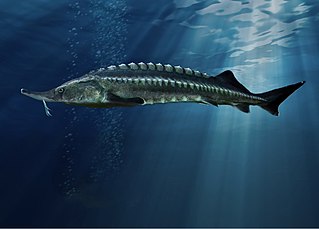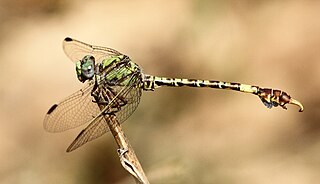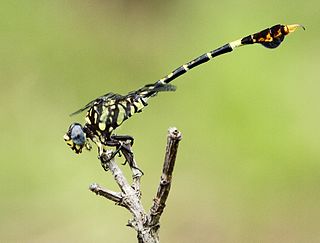
The Endangered Species Act of 1973 is the primary law in the United States for protecting imperiled species. Designed to protect critically imperiled species from extinction as a "consequence of economic growth and development untempered by adequate concern and conservation", the ESA was signed into law by President Richard Nixon on December 28, 1973. The U.S. Supreme Court called it “the most comprehensive legislation for the preservation of endangered species enacted by any nation". The purposes of the ESA are two-fold: to prevent extinction and to recover species to the point where the law's protections are not needed. It therefore “protect[s] species and the ecosystems upon which they depend" through different mechanisms. For example, section 4 requires the agencies overseeing the Act to designate imperiled species as threatened or endangered. Section 9 prohibits unlawful ‘take,’ of such species, which means to “harass, harm, hunt...” Section 7 directs federal agencies to use their authorities to help conserve listed species. The Act also serves as the enacting legislation to carry out the provisions outlined in The Convention on International Trade in Endangered Species of Wild Fauna and Flora (CITES). The Supreme Court found that "the plain intent of Congress in enacting" the ESA "was to halt and reverse the trend toward species extinction, whatever the cost." The Act is administered by two federal agencies, the United States Fish and Wildlife Service (FWS) and the National Marine Fisheries Service (NMFS). FWS and NMFS have been delegated the authority to promulgate rules in the Code of Federal Regulations to implement the provisions of the Act.

The conservation status of a group of organisms indicates whether the group still exists and how likely the group is to become extinct in the near future. Many factors are taken into account when assessing conservation status: not simply the number of individuals remaining, but the overall increase or decrease in the population over time, breeding success rates, and known threats. Various systems of conservation status exist and are in use at international, multi-country, national and local levels as well as for consumer use.

An IUCN Red List Critically Endangered (CR) species is one that has been categorized by the International Union for Conservation of Nature as facing an extremely high risk of extinction in the wild. As of 2020, there are 6,811 species that are considered to be Critically Endangered. This is out of the 120,372 species currently tracked by the IUCN.
Paragomphus alluaudi is a species of dragonfly in the family Gomphidae. It is found in Angola, Ethiopia, Kenya, and Tanzania. Its natural habitats are subtropical or tropical dry shrubland, subtropical or tropical moist shrubland, and rivers. It is threatened by habitat loss.

Paragomphus is a genus of dragonfly in the family Gomphidae. They are commonly known as Hooktails.
Paragomphus bredoi is a species of dragonfly in the family Gomphidae. It is found in the Democratic Republic of the Congo, Malawi, and possibly Uganda. Its natural habitat is subtropical or tropical moist lowland forests. Although its status is of "Least Concern", it is still threatened by habitat destruction.
Paragomphus cataractae is a species of dragonfly in the family Gomphidae. It is found in the Kunene River basin in parts of Namibia, Zambia and Zimbabwe. Its natural habitat is rivers. It is threatened by habitat loss.

Paragomphus cognatus (Rock Hooktail) is a species of dragonfly in the family Gomphidae.

Paragomphus elpidius, the corkscrew hooktail, is a species of dragonfly in the family Gomphidae. It is found in Botswana, the Democratic Republic of the Congo, Kenya, Malawi, Mozambique, Namibia, South Africa, Tanzania, Uganda, Zambia, Zimbabwe, and possibly Burundi. Its natural habitats are subtropical or tropical moist lowland forests, dry savanna, moist savanna, subtropical or tropical dry shrubland, subtropical or tropical moist shrubland, rivers, freshwater lakes, intermittent freshwater lakes, freshwater marshes, and intermittent freshwater marshes.

Paragomphus genei is a species of dragonfly in the family Gomphidae.
Paragomphus lacustris is a species of dragonfly in the family Gomphidae. It is found in the Democratic Republic of the Congo, Tanzania, and possibly Uganda. Its natural habitat is freshwater lakes.

Paragomphus magnus, the great hooktail is a species of dragonfly in the family Gomphidae.
Paragomphus pumilio is a species of dragonfly in the family Gomphidae. It is found in Egypt, Ethiopia, Kenya, and Sudan. Its natural habitats are dry savanna, rivers, freshwater lakes, and hot deserts.

Paragomphus sabicus, the Sabi hooktail, is a species of dragonfly in the family Gomphidae. It is found in Botswana, Kenya, Malawi, Mozambique, Namibia, South Africa, Tanzania, Zambia, and Zimbabwe. Its natural habitats are subtropical or tropical moist lowland forests, subtropical or tropical dry shrubland, subtropical or tropical moist shrubland, and rivers.

Paragomphus sinaiticus, the Sinai hooktail, is a species of dragonfly in the family Gomphidae. It is found in Egypt, Niger, Oman, Saudi Arabia, Sudan, United Arab Emirates and Yemen. Its natural habitats are rivers and freshwater springs. It is threatened by habitat loss.
Paragomphus viridior is a species of dragonfly in the family Gomphidae. It is found in Kenya, Sudan, and Uganda. Its natural habitats are subtropical or tropical moist lowland forests and rivers.
Paragomphus zambeziensis is a species of dragonfly in the family Gomphidae. It is endemic to Zimbabwe. Its natural habitat is rivers. It is threatened by habitat loss.

Paragomphus lineatus, Lined hooktail, is a species of dragonfly in the family Gomphidae. It is a widespread species; recorded from India to Turkey.
Agelanthus nyasicus is a species of hemiparasitic plant in the family Loranthaceae, which is native to Botswana, Malawi, Mozambique, Tanzania, Zambia, Zaïre and Zimbabwe.











